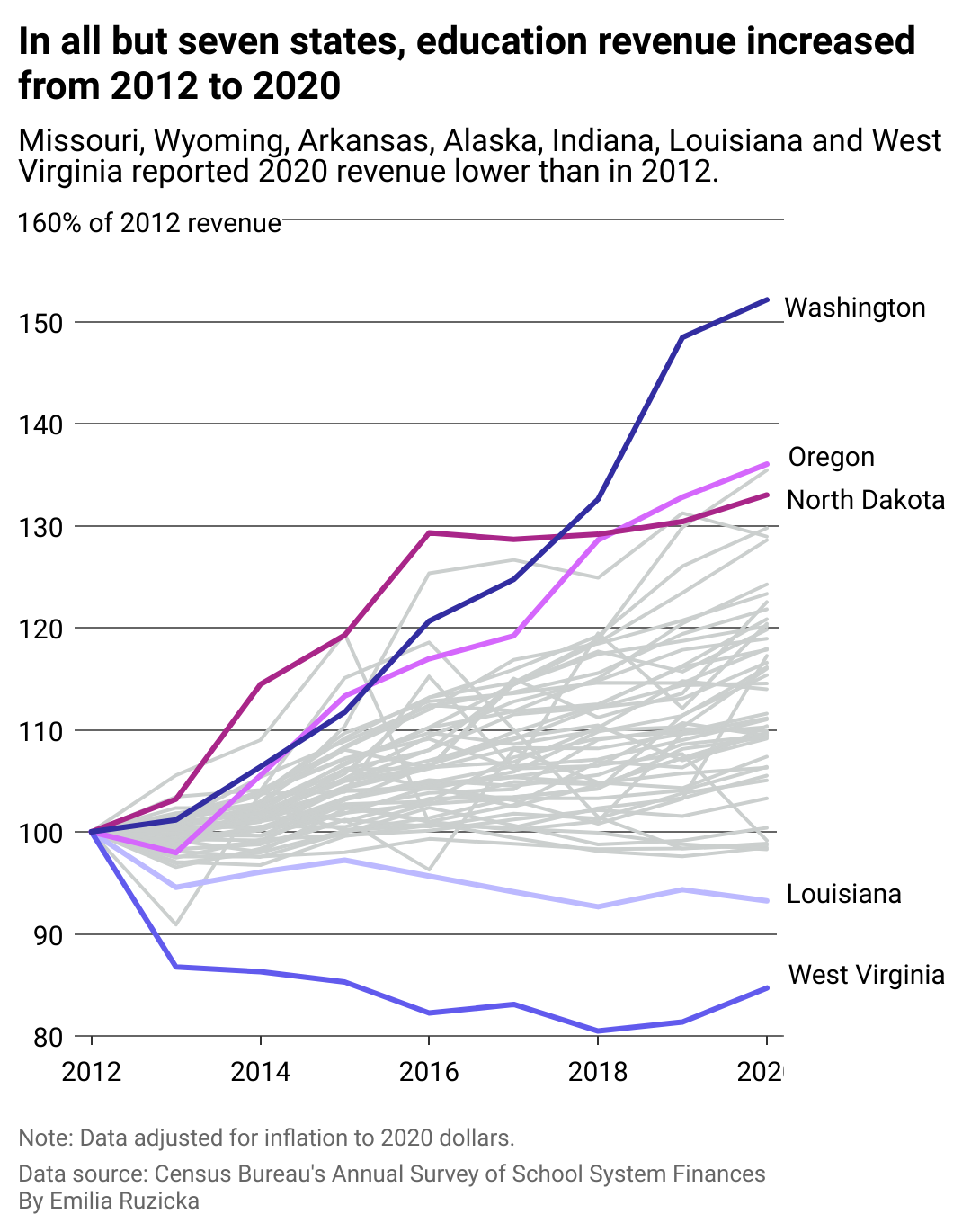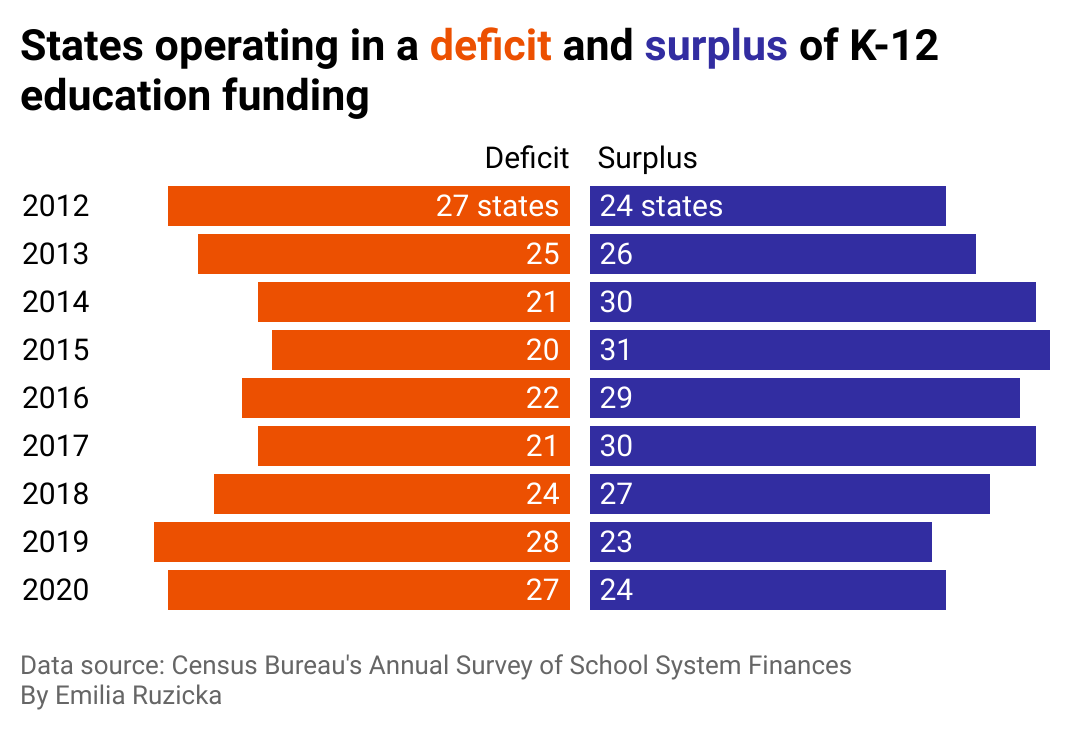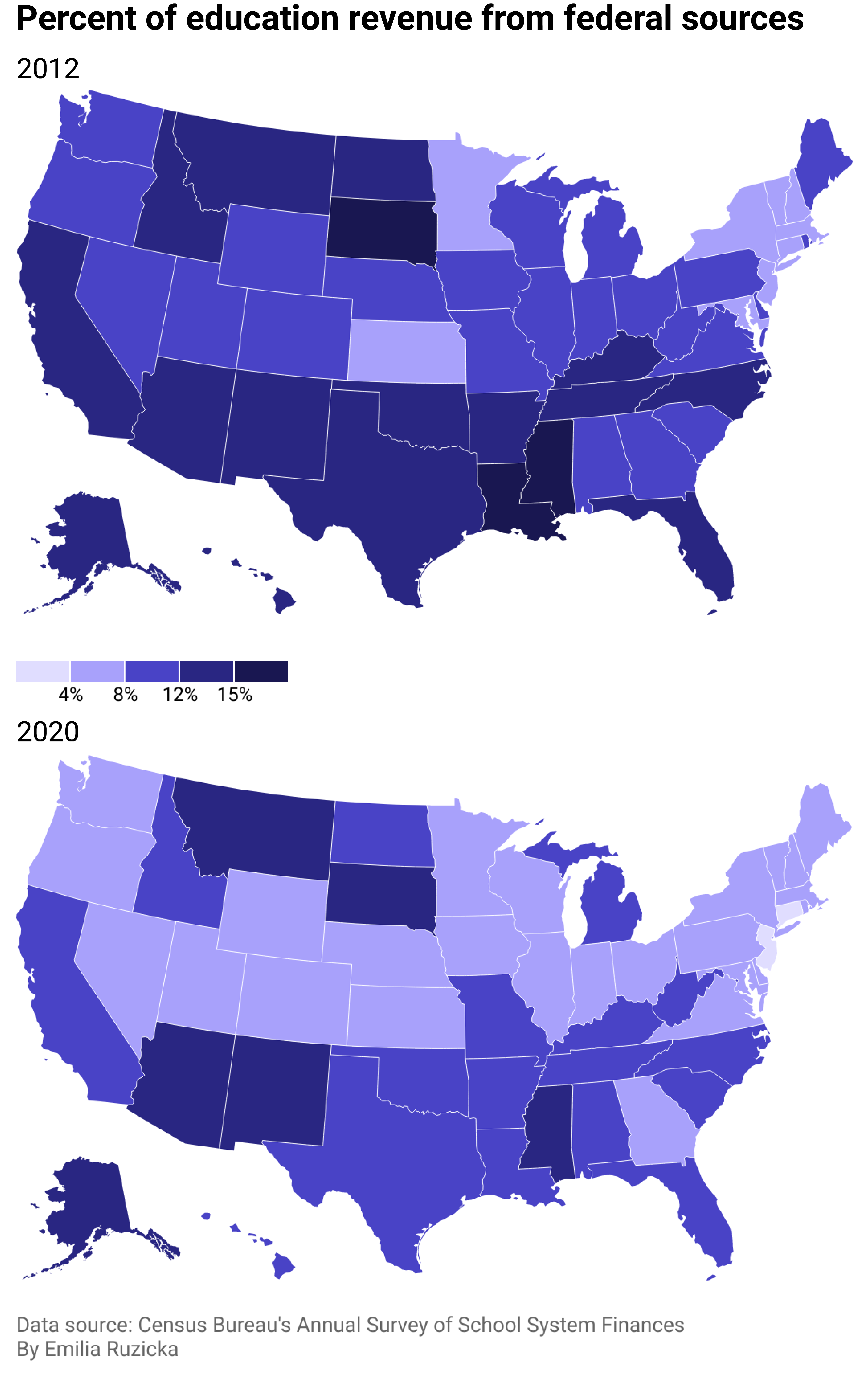How K-12 public school funding has changed over the past decade
Canva
How K-12 public school funding has changed over the past decade
A class of school students raising their hands at their desks.
The public school system remains the most common means of schooling for children in the United States.
Yet, despite the vital role public schools play in the education of future generations of Americans, the national public school system faces a myriad of problems in “equity, adequacy, effort, and sufficiency,” according to the Economic Policy Institute. Despite these issues, however, public school enrollment has, on average, increased from figures 10 years ago.
As of fall 2019, around 50.8 million children in the country attended public elementary and secondary schools, an increase of 1.4 million students since fall 2009, according to data from the Department of Education’s National Center for Education Statistics. This rise in public school enrollment positively correlates with public school system revenue, although increased expenditures have accompanied revenue growth over this period.
Unfortunately, as with many other social and educational systems, the COVID-19 pandemic took its toll on public school enrollment. During the first two years of the pandemic, public school enrollment in the U.S. decreased by over 1 million students—practically canceling out the gains of the previous 10 years—with losses largely concentrated in early elementary years and kindergarten due to remote learning options and home-schooling, according to the Urban Institute.
Since funding status has a direct, correlative bearing on the health of the greater public school system, HeyTutor studied the changes in public school funding over the past decade, using data from the Census Bureau’s Annual Survey of School System Finances. Monetary figures in the data have been adjusted for inflation into 2020 dollars.
![]()

HeyTutor
Education revenue has increased overall since 2012
A line chart showing how in all but seven states, education revenue has increased from 2012 to 2020.
Public school systems in states across the country receive most of their revenue from local and state authorities, with some funds from the federal government. According to the National Center for Education Statistics, much of the rise in total education revenue between 2012 and 2020 has been driven by a rise in local and state government spending on public school systems.
Federal spending, on the other hand, gradually decreased and flattened out between 2012 and 2020, with minimal increases and decreases that remain below 2009 levels ($92 billion). The fall in federal spending on public schools began a year after the passage of the American Recovery and Reinvestment Act of 2009.
In West Virginia, a combination of social issues, emigration, and poverty has contributed to smaller state and local budgets. This coupled with a teacher shortage has led to lower spending on education, which explains why when states across the nation saw an increase in public school education revenues, West Virginia lagged.

HeyTutor
For the last decade, education expenditures have been greater than education revenue
A diverging bar chart showing how in most states, education expenditures have been greater than education revenue from 2012 to 2020.
Most public education expenditures come from staff and educator salaries. However, between 2009 and 2019, the proportion of expenditures for salaries fell from 60% to 55%, according to the National Center for Education Statistics.
Purchased services—such as food, transportation, janitorial services, and teachers’ professional development programs—rose, albeit slightly (1% of total expenditures), between 2009 and 2019, while spending on supplies such as books and heating oil fell by the same measure during the same period. Tuition fees, however, stood at 2% of total expenditures in 2009 and 2019. For 27 states, total expenditures across all categories exceeded the funding received.

HeyTutor
The percentage of education revenue coming from federal sources has decreased in most states
Two state-level choropleth maps of the U.S. showing how the percentage of education revenue coming from federal sources has decreased in most states.
The decline in federal government aid to local and state authorities for public education coincides with the decrease in federal aid in other areas due to spending cuts, according to the Center on Budget and Policy Priorities. Since 2009, as previously discussed, federal spending particularly in public education has fallen.
Discretionary spending by the federal government helps subsidize education for low-income students and students with special needs. With federal discretionary spending at its lowest levels since 1989, cuts in federal aid pressure state and local governments to fill in the gap. Local authorities in less-affluent areas where many low-income families live are, in particular, feeling the brunt of this, and the lack of federal funding pushes public school systems in these areas into deficits.
This story originally appeared on HeyTutor and was produced and
distributed in partnership with Stacker Studio.
